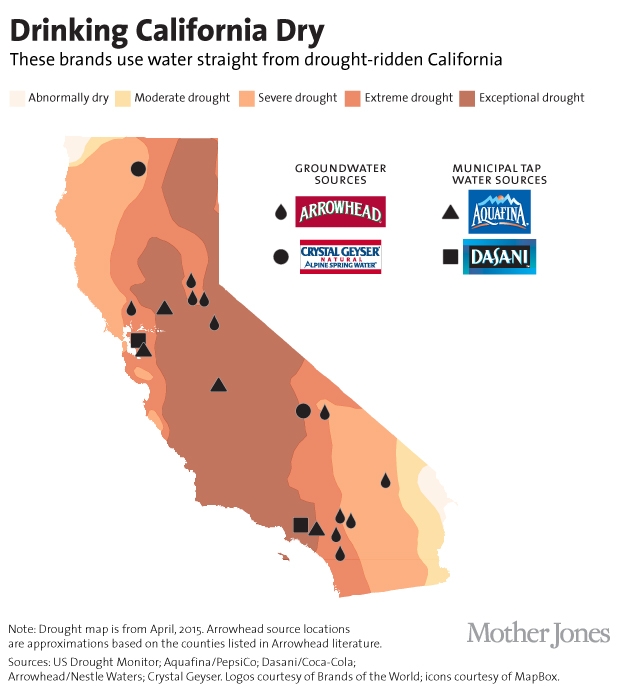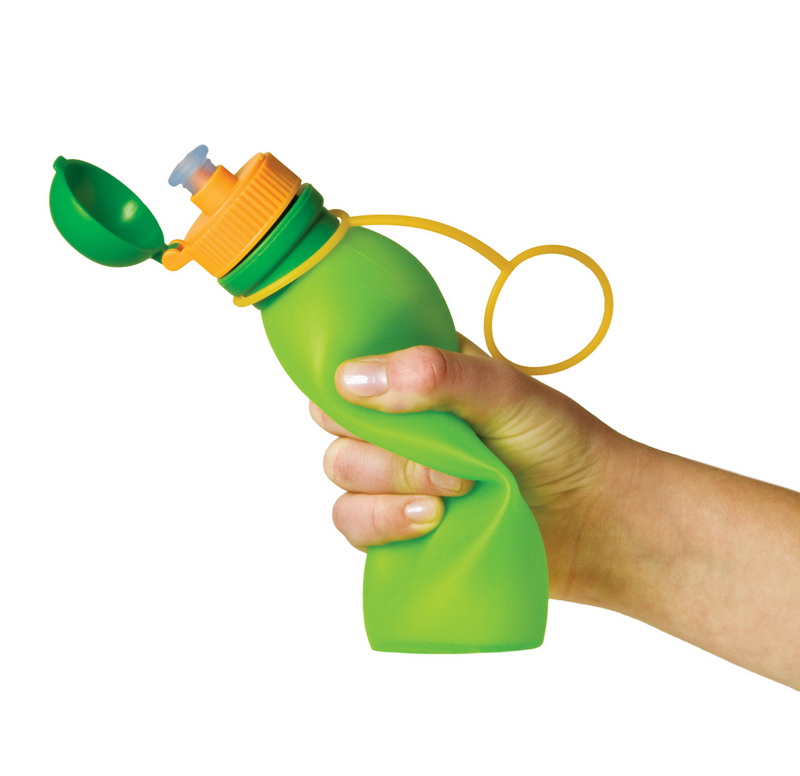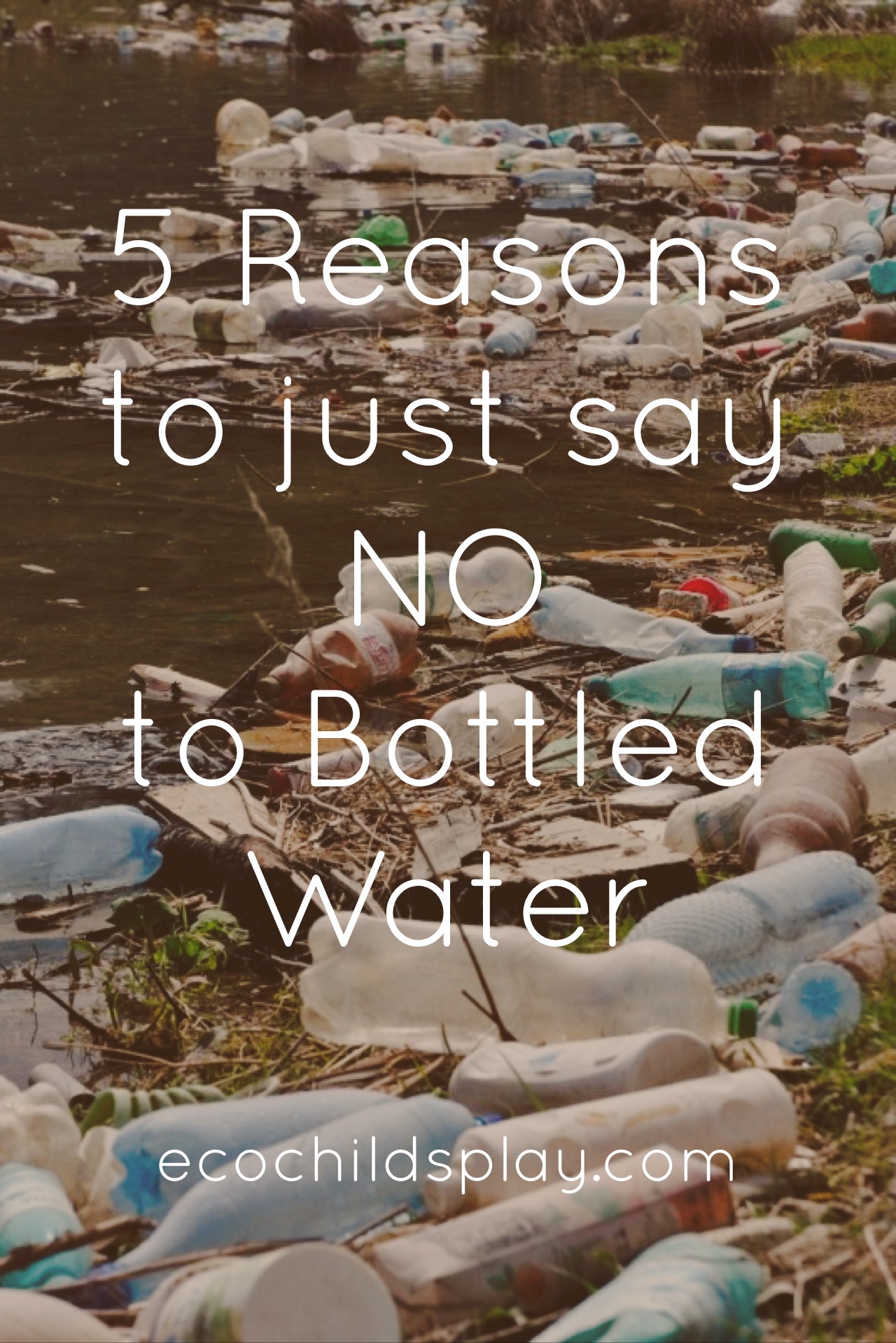Photo credit: Horia Varlan via Foter.com / CC BY
Do you remember a time when bottled water wasn’t a thing, and we weren’t afraid of the tap or a drinking fountain? How did this change come about? Why were we suckered into believing bottled water was safer for us than the water coming out of the faucet? How did bottled water become a booming $100 billion year business in just the US?((http://www.businessinsider.com/facts-bottled-water-industry-2011-10)) Why do we think it better to drink water shipped halfway around the world?
5 reasons why you shouldn’t drink bottled water
1. Bottled water contains 24,500 chemicals
Conservative Fox News reported in 2014:
In a recent study by German researchers, nearly 25,000 chemicals were found lurking in a single bottle of water. Many of these chemicals mimic the effects of potent pharmaceuticals inside your body, according to the study published in the journal PLoS One…
As a healthy adult, the occasional sip from the “toxic fountain” of bottled water won’t kill you. However, small children, women of child-bearing age, and pregnant women are at greater risk of poor outcomes when exposed to these chemicals. Effects can include stunted growth, early puberty, premature birth, infertility and early menopause – just to name a few. The remaining population should still exercise caution, as more and more research is discovering that these chemical can also trigger diabetes, heart disease and certain types of cancer.((http://www.foxnews.com/health/2014/01/13/more-than-24500-chemicals-found-in-bottled-water.html))
2. Transporting bottled water has long-term environmental impacts
The Guardian reports:
The most obvious sustainability black mark against the bottled water industry relates to imports. The branding for bottled waters is linked to their place of origin: for Evian, owned by French multinational Danone, it’s the “pristine peaks of the French Alps”; for Italy’s San Pellegrino, its “terroir” is the mountains of Lombardy.
Yet it doesn’t need an environmentalist to tell us that carting water from one country to another in plastic bottles makes zero sense…((http://www.theguardian.com/sustainable-business/2015/jul/09/bottled-water-shipped-halfway-round–world-madness))
According to the Pacific Institute in 2007:
More energy is needed to fill the bottles with water at the factory, move it by truck, train, ship, or air freight to the user, cool it in grocery stores or home refrigerators, and recover, recycle, or throw away the empty bottles. The Pacific Institute estimates that the total amount of energy embedded in our use of bottled water can be as high as the equivalent of filling a plastic bottle one quarter full with oil.((http://pacinst.org/publication/bottled-water-and-energy-a-fact-sheet/))
The Huffington Post further explains:
Even the environmental impact of delivering all that bottled water is profound, both from overseas (Fiji Water, Pellegrino) and distribution to stores in the US. It takes a fleet of 40,000 18-wheelers just to deliver our bottle water every week!
3. Only 12% of plastic water bottles are recycled in the US
You’ve seen them discarded in parking lots, gutters, trails, beaches, etc. As the bottled water industry has exploded, so has the waste. It’s not just post-consumer recycling rates that are abhorrent, it’s also the amount of recycled content in the bottles themselves that is shameful. The Guardian explains:
Bottled water isn’t just about the water. It’s about the bottle too. A sizeable proportion of the industry’s supply-side impacts derive from packaging.
Plastic dominates. The industry’s big players, such as Nestlé, Danone, Coca-Cola and Pepsi, are all pursuing efforts to increase recycled content in polyethylene terephthalate (PET). But progress is slow. Coca-Cola, for instance, averages 34% of recycled PET across all its bottled drinks…((http://www.theguardian.com/sustainable-business/2015/jul/09/bottled-water-shipped-halfway-round–world-madness))
 4. 1 gallon of bottled water takes 3 gallons to make((http://www.businessinsider.com/facts-bottled-water-industry-2011-10?op=1))
4. 1 gallon of bottled water takes 3 gallons to make((http://www.businessinsider.com/facts-bottled-water-industry-2011-10?op=1))
It takes three times the amount of water bottled to make it. The water used in the process is laden with chemicals and thus not reused.((http://www.huffingtonpost.com/norm-schriever/post_5218_b_3613577.html)) For every gallon water bottled, three gallons are wasted in the process.
Bottled water has come under a lot of scrutinies in drought-stricken California mainly for the local aquifers that are drained by water companies. There is 110 water bottling plants in California. 3.1 billion gallons of California water is bottled at these sites.((http://money.cnn.com/2015/05/26/news/companies/california-bottled-water-drought/)) Multiple this number by three, and you find that 6.2 billion gallons of water are needlessly wasted each year because Americans are fooled into thinking it is safer than tap.
5. Almost half of bottled water is tap water in disguise
We’ve been duped into thinking our tap water is not safe, but 45% of all bottled water is actually tap water rebottled, purified, branded and sold to consumers((http://www.motherjones.com/environment/2014/08/bottled-water-california-drought)).
Business Insider explains, “‘The biggest enemy is tap water,‘ said a Pepsi VP in 2000. ‘When we’re done, tap water will be relegated to irrigation and washing dishes,’ said Susan D. Wellington of Quaker Oats, the maker of Gatorade.”((http://www.businessinsider.com/facts-bottled-water-industry-2011-10?op=1))
Furthermore, you can’t trust the labels to know even where the bottled water originates. Mother Jones explains:
Then there’s the aforementioned murkiness of the industry: Companies aren’t required to publicly disclose exactly where their sources are or how much water each facility bottles. Peter Gleick, author of Bottled and Sold: The Story Behind Our Obsession With Bottled Water, says, “I don’t think people have a clue—no one knows” where their bottled water comes from. (Fun facts he’s discovered in his research: Everest water comes from Texas, Glacier Mountain comes from Ohio, and only about a third of Poland Springs water comes from the actual Poland Spring, in Maine.)((http://www.motherjones.com/environment/2014/08/bottled-water-california-drought))
I can’t help but be reminded of the scene in Slumdog Millionaire where they are refilling bottles of water from the tap in the restaurant.
It is true that there are instances where city drinking water has been very unsafe to consume. The lead in Flint, Michigan’s water being a case in point.((http://www.cnn.com/2016/01/11/health/toxic-tap-water-flint-michigan/)). These cases are less common than the large consumption of bottled water would lead one to believe.
There are more than just these five reasons to just say no to drinking bottled water. From hijacking community water sources to releasing tons of CO2 into the atmosphere, saying NO to bottled water is a must. Just the production of the bottles themselves accounts for at least 2.5 million tons of CO2 in 2006. ((http://pacinst.org/publication/bottled-water-and-energy-a-fact-sheet/))
If you are concerned about the quality of your tap water, install a water filter. There are many different kinds of water filters. From Multi-pure to reverse osmosis to UV purifiers, there are options for different needs and budgets. Getting your tap water tested first either through a home kit or a testing agency, will give you information to help you select the right kind of filter for your home
Always carry a refillable water bottle with you. Many drinking fountains now are also refilling stations. I have seen them in airports, schools, and ski resorts. There is rarely a need to buy bottled water when you come prepared with your own bottle.
 One unique refillable water bottle we were sent to try is called the Pocket Bottle. It is a collapsible silicone bottle. It smooshes and morphs to fit easily into any bag or purse. It is safe for either hot or cold beverages.
One unique refillable water bottle we were sent to try is called the Pocket Bottle. It is a collapsible silicone bottle. It smooshes and morphs to fit easily into any bag or purse. It is safe for either hot or cold beverages.
Crafted in BPA-Free, non-toxic, and FDA approved silicone and polypropylene, PocketBottle is ideal for hydration on the go, including all forms of outdoor activities such as running, hiking, cycling, and boating, as well as trips to the gym, the office, beach, pool, and more. PocketBottle preserves the environment by offering a “green” solution to disposable water bottles made from BPA-containing materials that clog landfills. The ultimate in space-saving storage, PocketBottle folds down like an empty toothpaste tube to fit compactly into a pocket or bag when not in use. PocketBottle’s ingeniously collapsed shape is secured with a well-designed, double-sided O-ring that easily wraps around the folded bottle.
PocketBottle’s ergonomically slim and lightweight design allows for easy holding when filled with water, juice, and other liquids, and features a fool-proof latching cap that “clicks” closed to ensure a leak-free seal. As an added convenience, a double- sided O-ring fastens down the bottle when folded for the ultimate in space-saving storage.
Do yourself and the planet a favor…purchase a home filtration and/or purification system and use reusable glass or stainless steel water bottles.


We should not avoid bottle water completely, but we should not take bottle water if we have alternative option. If you look at your drinking water through this passes of a 5-micron sediment filter, there are some particulars like dirt, silt, and rust. These will affect the taste and get up to your water, and clog the system. However today supply water contains impurities and pathogens that can cause death, so be careful while choosing the purifier. Check this page- http://www.ewaterpurifier.com/tactics-to-choose-the-best-ro-system/ basically a revers osmosis purifier.
Hi Jennifer! Really great article! You’re right that bottled water isn’t all that it’s cracked up to be. People think that it’s safer to drink than tap water, but that’s not always true. Bottled water plants aren’t regulated as strictly as municipal water supplies are because they’re overseen by different government agencies. And you really do need to do your homework to find out what the source of the water is. I also recommend filtering your own tap water and taking it with you in an eco-friendly reusable bottle. My most recent blog post has some information about tap water and bottled water, if anyone is interested. http://thesafehealthyhome.com/6-reasons-you-need-to-filter-your-water/
That said, I do keep a couple of cases of bottled water on hand for emergency preparedness, but I’m not a daily consumer of bottle water for the reasons you stated. Pinning this article!